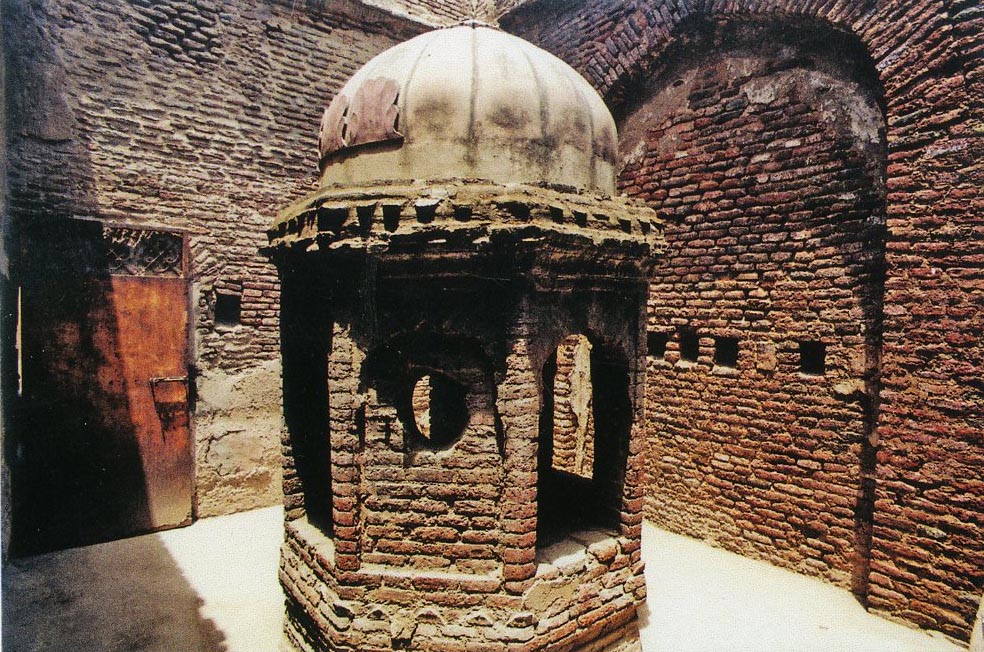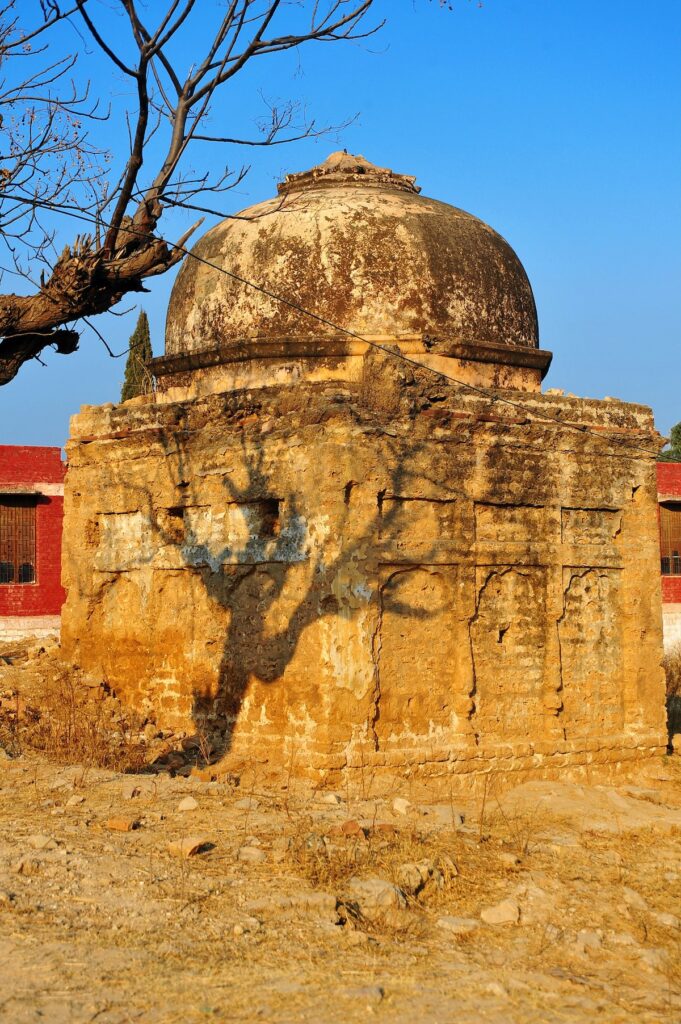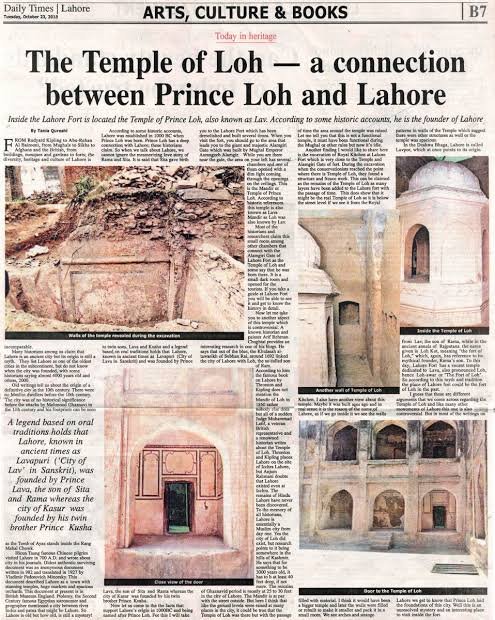
Lava Temple or Fort of Loh is a shrine dedicated to the son of Rama. This temple reminds us of the rich and unique history of the city of Lahore. Right now this sanctuary is under the Pakistan Hindu council.
According to Hindu Mythology, The name of Lahore city is attributed to Lava the son of the Great Hindu God Rama Chandra. Who is the founder of Lahore city & Lahore Fort. It is situated inside the Alamgiri Gate of Lahore Fort and very near to Royal Kitchens. It is a very interesting temple and most people don’t know about this hidden treasure of Lahore Fort. Lava temple is one of the most intriguing site you can visit in this ancient city.
The Mandir or Temple of Prince Loh, also known as Lava Mandir is located inside the Alamgiri Gate of Lahore Fort. Most historians and researchers claim this small room among other chambers that connect with the Alamgiri Gate of Lahore Fort is the temple of Loh. And some say that he was born there. It is a small dark room and opened to tourists. However, If you take a guide at Lahore Fort you will be able to see it and get to know the history in detail.
A hexagonal brick structure topped with a dome. Moreover, On the floor, in front of the temple, was an empty bottle of mineral water. While on the temple itself, some graffiti was visible testament to the disrespect that the temple had experienced. Currently, this temple is under the control of the Pakistan Government and is managed by the Pakistan Hindu Council.

History of Lava temple
Prince Loh has a deep connection with Lahore; this is what the historians claim. So when we talk about Lahore, we cannot ignore the mesmerizing love story of Rama and Sita and their children. It is said that Sita gave birth to twin sons. Lava and Kusha and a legend based on oral traditions holds that Lahore. Known in ancient times as Lavapuri (the City of Lava in Sanskrit) and was founded by Prince Lava, the son of Sita and Rama. Whereas the city of Kasur was founded by his twin brother Prince Kusha.
Also See: Karachi going to host the opening ceremony of the PSL 8
Now let me take you to another aspect of this temple which is controversial. A known historian and painter Arif Rehman Chughtai provides interesting research in one of his blogs. Moreover, He says that out of the blue, the Khulasah al-tawarikh of Subhan Rai. Around 1692 linked the city of Lahore with Loh, the so-called son of Ram. According to him the famous book on Lahore by Thronton and Kipling does not mention the Mandir of Loh in 1860. Rather nobody else does but all of sudden Judge Muhammad Latif. A veteran British representative and a renowned historian write about the Temple of Loh.
I guess that these are different arguments that we come across regarding the Temple of Loh and like many other monuments of Lahore this one is also controversial. But in most of the writings on Lahore, we get to know that Prince Loh laid the foundations of this city. Well, this is an unresolved mystery and an interesting place to visit inside the fort.

History of Lahore city
The oldest authentic document about Lahore was written anonymously in 982. It is called Hudud-i-Alam (The Regions of the World). In 1927 it was translated into English by Vladimir Fedorovich Minorsky and published in Lahore. In this document, Lahore is referred to as a small shehr (city) with “impressive temples, large markets, and huge orchards.” It refers to “two major markets around which dwellings exist,” and it also mentions “the mud walls that enclose these two dwellings to make it one.”
The original document is currently held in the British Museum. Lahore was called by different names throughout history. To date, there is no conclusive evidence as to when it was founded. Some historians trace the history of the city as far back as 4000 years ago. However, historically, it has been proved that Lahore is at least 2,000 years old. Lying on the main trade and invasion routes to South Asia, Lahore has been ruled and plundered by several dynasties and hordes.
